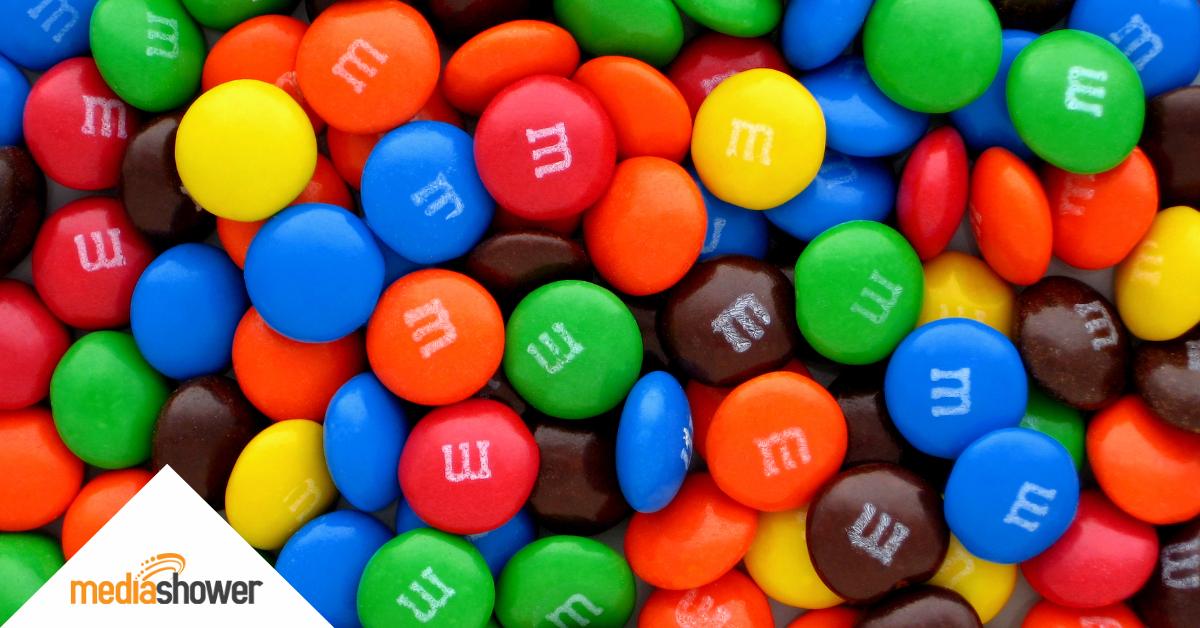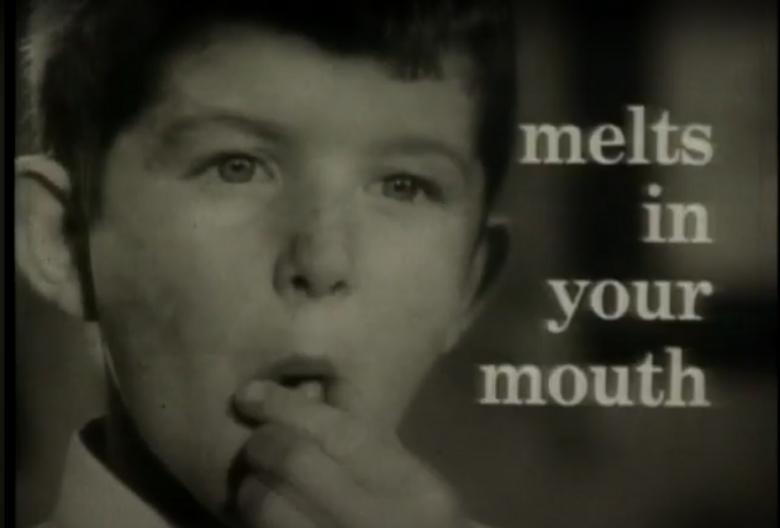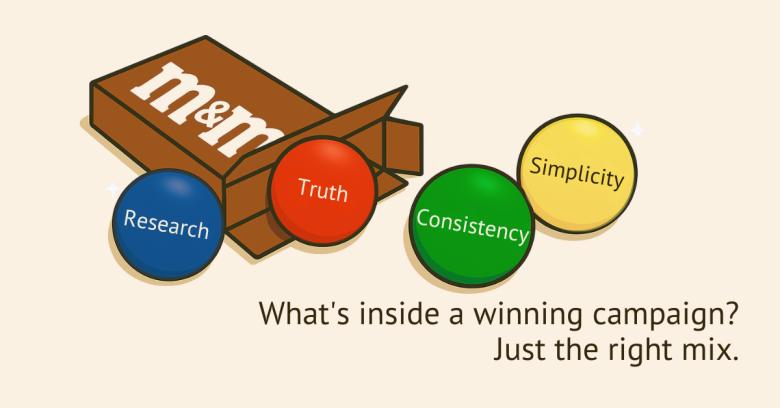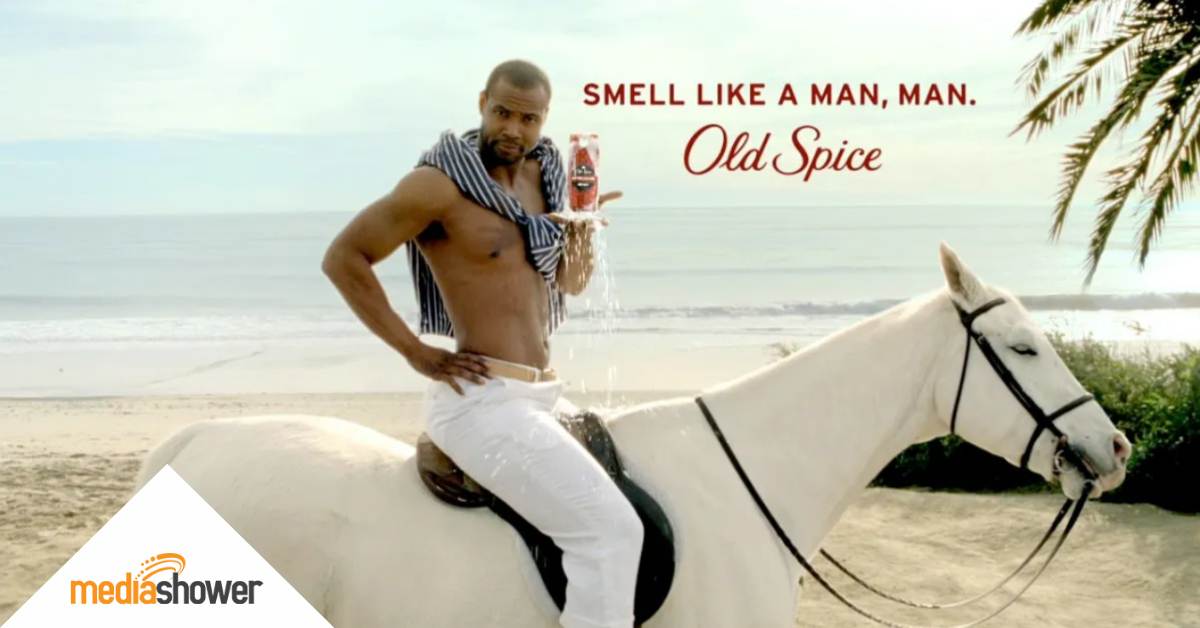
Quick Summary
- The post-war “Melts in your mouth, not in your hands” campaign transformed M&M’s from military supply to America’s favorite candy.
- This brilliant marketing insight addressed practical concerns while creating an instantly memorable brand message.
- Within five years of launch, M&M’s became America’s best-selling candy, generating over $40 million in annual sales.
Long before the introduction of the M&M “spokescandies,” World War II soldiers were enjoying the now-iconic candy-coated chocolates.
As the war ended, the brand faced a dilemma. The transition from military supplier to retail success story wasn’t happening as planned. While the candy had been a hit with American soldiers, civilian consumers weren’t biting.
The answer came in 1950 when Forrest Mars hired the Ted Bates & Company advertising agency to conduct the first comprehensive market study in candy industry history. While other manufacturers relied on gut instinct, Mars wanted data.
The findings would change candy marketing forever.
1954 “Which Hand?” Commercial
The M&Ms Origin Story
In 1941, Forrest Mars partnered with Bruce Murrie (“M&M” = Mars and Murrie) to create candy-coated chocolates that wouldn’t melt in tropical climates—perfect for military rations during World War II.
When the war ended, M&M’s needed to find new customers. Despite having a superior product—chocolate that wouldn’t melt or make a mess—consumer sales remained tepid for years.
They needed to break the (candy) mold.
At the time, most candy marketing focused on flavor, fantasy, and emotional reassurance, painting sweets as wholesome rewards.
Taglines promised “the fresh candy bar with the fresh candy taste” (Tootsie Roll) and “the whole day’s energy in one candy roll” (Baby Ruth), blurring the line between indulgence and sustenance.
Brands leaned into family values and postwar optimism, with slogans like “Still only 5¢” (Life Savers) and “The sweet you can eat between meals—without ruining your appetite” (Milky Way).
Hershey’s pitched chocolate as “a nourishing food… in candy form,” while others tried to charm consumers with just-right sweetness (Necco Wafers) or gentle nostalgia.
Mars saw an opening by leaning into a practical benefit. It wasn’t flashy, but it solved a real-world problem—an unexpected move in a market obsessed with sentiment and trying to make candy look wholesome.
Campaign Overview
The breakthrough came when Mars commissioned Ted Bates & Company to perform a comprehensive market study, an approach virtually unheard of in the candy industry at that time.
The research revealed numerous insights, including that these colorful candies particularly appealed to children, and that parents were looking for treats that wouldn’t create messes.
This led to the 1954 creation of what would become one of the most brilliant slogans in advertising history: “The milk chocolate that melts in your mouth, not in your hands.”
The genius of this tagline was its simplicity and accuracy. It wasn’t an exaggerated claim—the candy shell truly did prevent the chocolate from melting in warm hands—but it positioned a practical product feature as a meaningful consumer benefit.
To support the campaign, M&M’s sponsored popular children’s television shows like “The Mickey Mouse Club” and “Howdy Doody,” creating awareness among both kids and their parents.
These shows commanded massive reach among baby boom families and gave M&M’s a direct line to the duo that mattered: parents and children. In today’s terms, it was strategic influencer marketing—but with puppets instead of TikTok stars.
Peanut Butter M&Ms commercial from 1982.
Key Success Factors
Product truth at its core
The claim wasn’t marketing hyperbole. The candy-coated shell genuinely did prevent melting, a function deliberately created for soldiers in hot climates.
Simple, memorable language
The straightforward slogan was easy to remember and repeat. It quickly became part of the cultural vocabulary.
Addressing a parental pain point
By highlighting the no-mess feature, the campaign addressed a genuine consumer concern for parents, who were often the purchasers.
Perfect timing
The campaign coincided with television’s rise as a dominant medium, allowing M&M’s to create memorable visual demonstrations of their “no-melt” claim.
The late ‘90s: Trends changed, but the slogan didn’t.
Innovative Elements
Research-driven approach
While competitors operated on intuition, Mars pioneered the use of comprehensive market research to guide candy marketing decisions.
Problem-solution positioning
The campaign focused on solving a practical problem rather than just promoting taste or ingredients, setting a new standard for benefit-oriented marketing.
Restraint in messaging
Rather than making multiple claims, the campaign demonstrated remarkable focus by highlighting just one distinctive benefit.
Dual audience targeting
The campaign cleverly addressed both children’s desire for chocolate and parents’ concerns about messiness.

Impact and Results
Market dominance
By 1956, just five years after launching the campaign, M&M’s had become America’s top-selling candy with over $40 million in annual sales.
Brand distinction
The campaign’s success led Mars to add the distinctive “m” imprint on each candy in 1954, initially in black and later in white, reinforcing brand recognition.
Enduring message
Mars, Inc. has added new slogans over the years, but they never officially retired the “Melts in Your Mouth” tagline. They have continued to use it periodically for over 70 years, making it one of the most recognized taglines in advertising history.
The slogan has been referenced in pop culture, parodied in films, and remains instantly associated with the brand—proof that one clear benefit can outlast generations of product innovation.
Platform for growth
The campaign laid the groundwork for decades of innovation. M&M’s expanded into peanut and other flavor variations without losing sight of its core promise.
In 1995, the brand introduced the now-iconic spokescandies—bringing personality to the product while keeping the original message intact.

Marketer Takeaways
- Research reveals opportunities. Because they invested in formal market research when competitors relied on intuition, Mars uncovered insights that transformed its business.
- Product truth matters. The campaign succeeded because it highlighted a genuine, demonstrable product advantage rather than an invented claim.
- Simplicity cuts through. In focusing on a single, clear benefit expressed in straightforward language, M&M’s created a message that has endured for over 70 years.
- Consistent messaging builds brands. The campaign established a core brand promise that has remained consistent through decades of marketing evolution.


